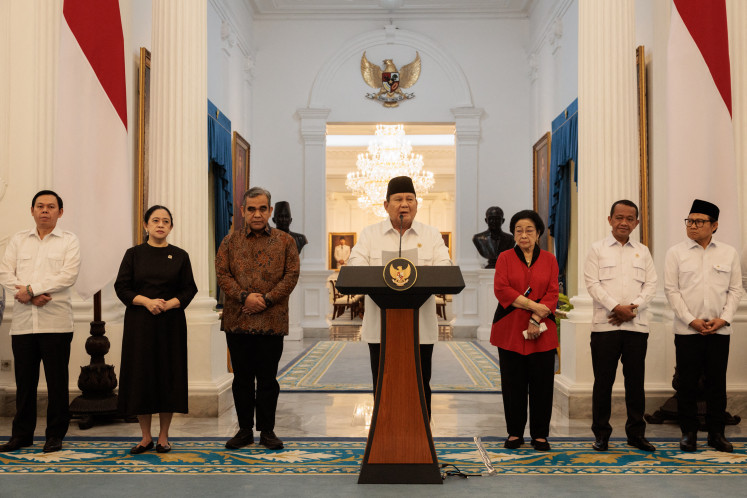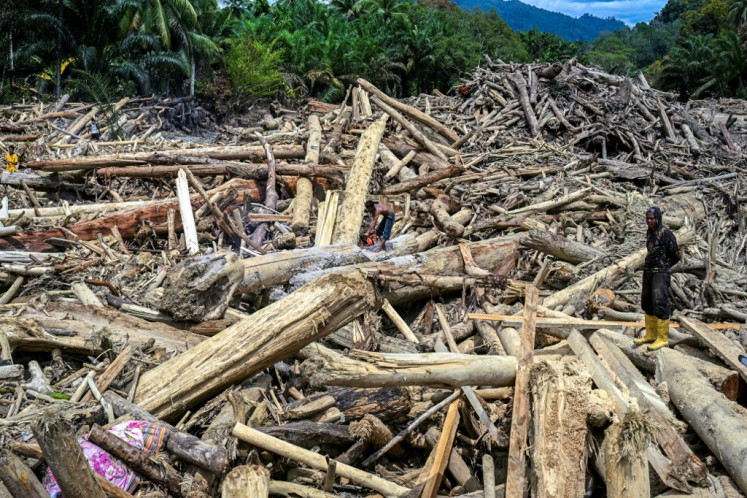Popular Reads
Top Results
Can't find what you're looking for?
View all search resultsPopular Reads
Top Results
Can't find what you're looking for?
View all search resultsAfter the customary forest recognition
For indigenous people living in coastal areas, the law on the management of coastal areas and small islands requires the state to recognize those people’s territories and rights.The question is whether the government already has a blueprint on national development for indigenous peoples.
Change text size
Gift Premium Articles
to Anyone
A
t the end of 2016, President Joko “Jokowi” Widodo signed a decree that acknowledged nine indigenous communities’ rights to customary forests covering a total of 13,100 hectares. The historic event followed the Constitutional Court’s ruling back in 2012, which states that customary forests are not part of state forests.
It took the government four years to comply with the court’s decision. Anyhow, the presidential decree signals the government’s political support for efforts to fulfill the constitutional rights of indigenous peoples, many of which have been ignored.
Forests play an important role for indigenous people. Their territory is a unitary area consisting of forests, gardens, fields and settlements, with all their facilities. For indigenous people living in coastal areas, beaches and small islands are an inseparable part of their territory.
The government’s recognition should not rest with these nine communities. Not just because indigenous peoples have for decades fallen victim to the state’s unilateral claim upon forest areas, but also because their rights to their land should be restored as a basic foundation and invaluable wealth of our diversity.
To achieve this objective, there are several major steps that the government should consider. In addition to customary forests, based on Village Law No. 6 /2014, the government is required to recognize and define indigenous villages.
Meanwhile, according to the 1960 Agrarian Law, in this kind of region, the government can provide communal rights to land. The government should lead this move and take a synergistic approach to realizing the law’s mandate.
For indigenous people living in coastal areas, the law on the management of coastal areas and small islands requires the state to recognize those people’s territories and rights.
The question is whether the government already has a blueprint on national development for indigenous peoples.
The fact that most of the indigenous community forests are located within forest areas is indisputable. According to the Indigenous Peoples Alliance of the Archipelago (AMAN), 90 percent of at least 84 million ha of indigenous communities’ territories are forest.
But more than a half of the customary forests have been converted into forestry and mining concession areas, as well as plantations.
According to the Agrarian and Spatial Planning Ministry / National Land Agency, 12.1 million hectares of forest overlap with definitive villages, settlements, fields, gardens and even urban areas, only to trigger agrarian conflicts.
This data has reinforced the belief that the recognition of customary forests is a means for the recognition of indigenous villages, the administration of communal rights and the resolution of stalled agrarian conflicts.
These measures could materialize if the government consistently implemented agrarian reform. This year, Presidential Regulation No. 45/2016 on the 2017 government work plan (RKP) has set agrarian reform as a national priority. The government has allocated 4.1 million forest areas as Land Objects for Agrarian Reform (TORA).
There are two classifications of TORA originating from forest areas, first is forest that has not been controlled by a community (fresh land) and forest that has been controlled by a community (existing).
The government will release the two gradually until 2019 and strengthen their rights’ foundation.
For land that is already controlled by a community, there may be complications. Therefore, the government can collect regional data using a top-down approach, while simultaneously receiving bottom-up registration in rural areas that overlap with forest.
Subsequently, the rights foundation is being strengthened. If a rural area belongs to an indigenous community, it can proceed with establishing an indigenous village.
For forest land owned by indigenous people but managed by other citizens, forest area release is not enough; it requires discharge from the indigenous people.
Problems will arise when dealing with fresh land. What if it turns out that the land is customary forest that has not been recorded and recognized? In anticipation of this, the government should carefully discharge forest areas with thorough verification that involves indigenous people.
Another approach is by defining the types of work of indigenous people, as farmers, land cultivators and traditional fishermen.
Therefore, Law No. 19 /2013 on the protection and empowerment of farmers and Law No. 7/2016 on the protection and empowerment of fishermen, fish farmers and salt farmers should be synergized.
Finally, we realize that a partial or sectoral approach, which has characterized government policies, will not work when addressing the rights of indigenous communities. Another model for the development of indigenous people is badly needed after territorial recognition.
---------------
We are looking for information, opinions, and in-depth analysis from experts or scholars in a variety of fields. We choose articles based on facts or opinions about general news, as well as quality analysis and commentary about Indonesia or international events. Send your piece to community@jakpost.com. For more information click here.










